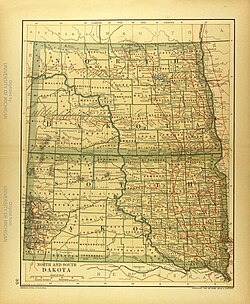
Throughout its history, the region now known as South Dakota has experienced a series of significant migration waves, each influencing the cultural, economic, and demographic landscape of the state. Prehistoric peoples, often referred to as Paleo-Indians, established early human presence over ten thousand years ago. Subsequent centuries saw the growth and movement of diverse Native American nations, such as the Arikara, Mandan, Hidatsa, and later the Sioux (Lakota, Dakota, and Nakota). European fur traders, most notably of French-Canadian origin, entered the region in the eighteenth century, paving the way for larger waves of Euro-American settlers under federal acts like the Homestead Act of 1862. In the late nineteenth and early twentieth centuries, various European immigrant groups—including Scandinavians, Germans from Russia, and Hutterites—sought farmland and religious freedom. African American families arrived as part of broader social movements, while more recent decades have brought immigrants from Latin America, Asia, and Africa, each group drawn by employment prospects and resettlement programs.
Research your ancestors on MyHeritage
List of South Dakota historical migration routesList of South Dakota historical migration routes
| Time Period | Ethnic Group | Origination Location | Arrival Location | Motivating Factors |
|---|---|---|---|---|
| Pre-contact (Estimated from 10,000 BCE onward) | Paleo-Indians (various groups) | Bering Land Bridge region (far northwest) and migrating southward | Great Plains region, including present-day South Dakota | Following megafauna and seasonal resources; gradual southward migration in pursuit of game |
| Before 1700s | Arikara (Arikaree), Mandan, Hidatsa | Upper Missouri River region (further north and west) | Central and northern South Dakota (Missouri River Valley) | Searching for fertile agricultural lands; trade networks along the Missouri River |
| Early 18th century to mid-19th century | Sioux (Lakota, Dakota, Nakota) | Upper Mississippi region and Great Lakes area | Eastern to western South Dakota (plains and river valleys) | Displacement by other tribes, competition for resources, and westward push of European settlement |
| 18th century | French-Canadian Fur Traders | French Canada (St. Lawrence River region, Great Lakes area) | Trading posts along the Missouri River in present-day South Dakota | Fur trade expansion; economic ventures seeking furs (particularly beaver) for European markets |
| Early-mid 19th century | Euro-American Pioneers and Settlers | Eastern United States, especially Midwest and Northeast | Eastern and southeastern parts of the Dakota Territory | Westward expansion; Homestead opportunities; land grants; economic prospects |
| 1870s–1890s | Northern European Immigrants (Norwegian, Swedish, Danish) | Scandinavia (Norway, Sweden, Denmark) | Primarily eastern South Dakota | Homestead Act of 1862; availability of farmland; chain migration of family and friends |
| 1870s–1900 | Germans from Russia (Volga Germans, Black Sea Germans) | Russian Empire (Volga region, Black Sea region) | Southeastern and central South Dakota | Escape from political and religious restrictions; seeking better farmland and economic stability |
| 1870s–1920s | Hutterites | Various parts of the Austro-Hungarian Empire, later Russian Empire | Colony settlements in eastern South Dakota | Religious freedom; communal living opportunities; escaping military conscription |
| Late 19th–early 20th century | Irish, Czech, Dutch, and other European Immigrants | Ireland, Bohemia (Czech Lands), Netherlands, and other parts of Europe | Mostly eastern and southeastern South Dakota, some in central regions | Economic opportunities; escaping political unrest; seeking farmland and homesteads |
| Early to mid-20th century | African Americans (Great Migration influence) | Southern United States | Larger towns and cities in southeastern South Dakota (e.g., Sioux Falls) and along rail lines | Industrial job opportunities; escape from Jim Crow laws; some recruitment by railroad companies |
| Mid to late 20th century | Native Americans relocating from reservations to urban centers | Reservations within South Dakota (e.g., Pine Ridge, Rosebud) and neighboring states | Urban areas such as Rapid City, Sioux Falls, Aberdeen | Economic challenges on reservations; search for jobs, education, and housing in cities |
| Late 20th century to present | Latin American, Asian, and African Immigrants | Mexico, Central America, various Asian and African nations | Urban areas, meatpacking towns (e.g., Sioux Falls, Huron), and smaller communities | Labor demand in meatpacking and agricultural industries; refugee resettlement programs; family reunification |
References

